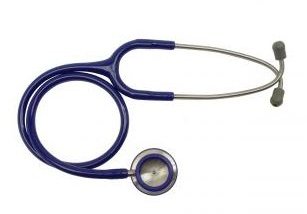Adrenal Gland Dysfunction: Symptoms of Addison's Disease and Treatment Options
What is Addison’s Disease?
What is Addison’s disease? Addison’s disease (primary adrenocortical insufficiency) is a rare medical condition that affects the body’s adrenal glands. The adrenal glands are located just above the kidneys. This rare disease occurs when an adrenal gland dysfunction occurs and they aren’t capable of producing normal levels of the hormones aldosterone or cortisol. When this occurs, the patient needs treatment.
Cortisol is needed in the body for normal body functions. It’s often released from the glands when the body is stressed from an illness, childbirth, injury, or surgery. Aldosterone is the other hormone affected with this medical condition. This hormone is needed to retain salt in the body and to maintain proper blood pressure.
The adrenal glands are controlled by the hypothalamus in the brain and the pituitary gland. They are responsible for sending the message to the adrenal glands to release the hormones. An interruption can occur along the way causing the adrenal glands to not release or produce enough of the two hormones. The body’s immune system can destroy the area of the adrenal glands that is responsible for producing aldosterone and cortisol. Either of these two causes can then result in Addison’s disease.
Medical Conditions
Causes of Addison’s Disease
Addison’s disease can be caused from multiple circumstances. Cancer that has spread to the adrenal glands can cause the adrenal gland dysfunction. This generally occurs in patients with lung cancer. Certain infections can result in this disease as well, such as with tuberculosis or HIV. Surgery, radiation, and certain medications, like Ketoconazole, can result in Addison’s disease. Injury to the glands during pregnancy or the birthing process can leave the adrenal glands with this condition. Blood thinning medication have shown to cause bleeding in the glands which can then result in this rare medical disease.
Symptoms of Addison’s Disease
Addison’s disease can occur in anyone, at any age, even children. Although it’s more common in women, men with tuberculosis are at a higher risk than others. Symptoms of Addison’s disease often start slow and can go unrecognized. Addison’s disease symptoms usually come in the form of fatigue and weakness. There’s often unexpected weightless and loss of appetite. Nausea, vomiting, and diarrhea often occur later into the diseases progression. Symptoms have been reported of lightheadedness and a salt cravings. The skin can even alter in color becoming darker. All of these symptoms can lead up to adrenal crisis. This is when the patient experiences shock because of a steep decrease in blood pressure. The results can be fatal.
Treatment for Addison’s Disease
A doctor’s exam is needed to properly diagnose Addison’s disease. A doctor will review medical history, conduct a physical exam, and order laboratory testing to diagnose this condition. Unfortunately, there’s no cure for this disease. Addison’s disease treatment requires the use of medication for life to replace the cortisol and aldosterone levels the body is not capable of producing. Extra salt is needed in the diet when in hot or humid weather to replace what is lost during sweating. It’s advised for people with Addison’s disease to wear a medical alert bracelet with the medical condition listed on it.
References:
“Adrenal Insufficiency and Addison’s Disease” NIDDK
“Addison’s Disease” Mayoclinic.com
Photo: “Stethoscope 2” By Barky Stock.xchng
